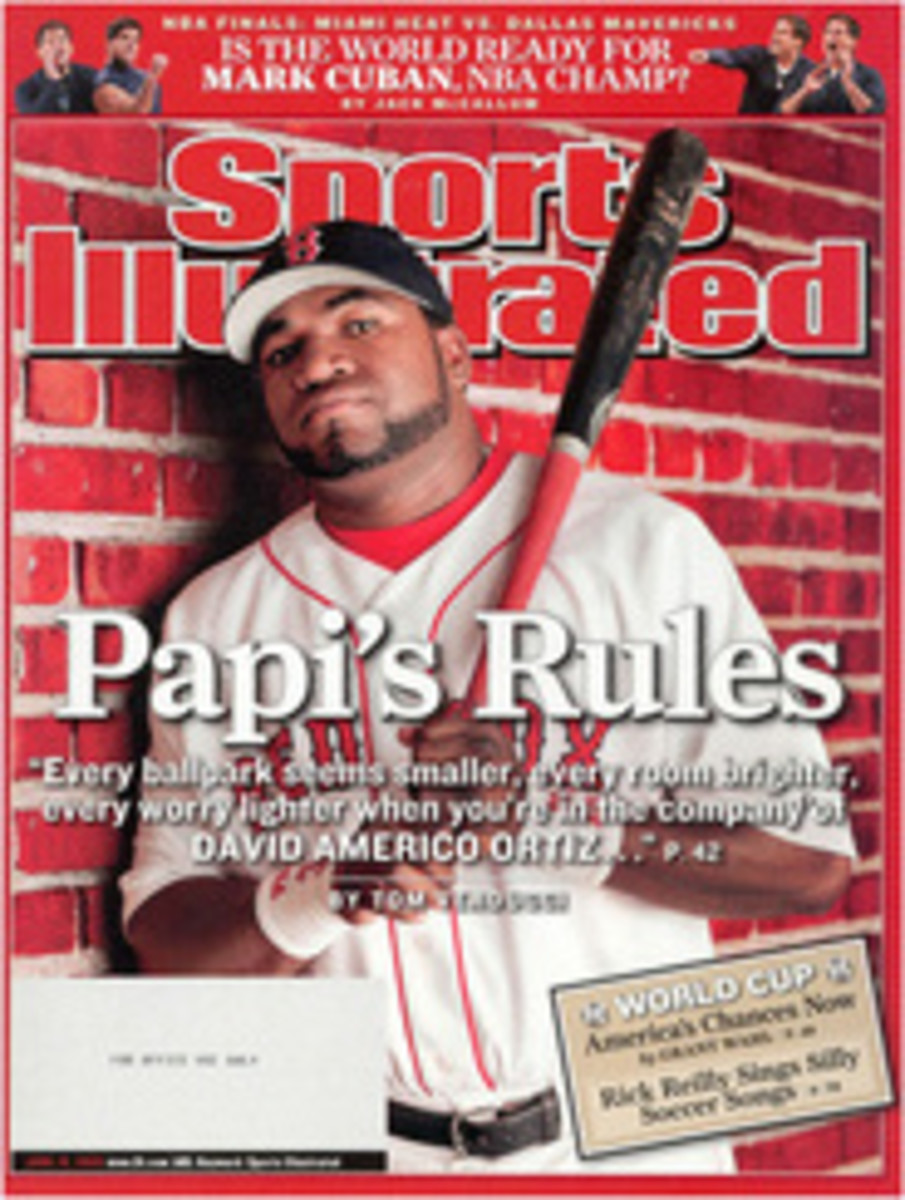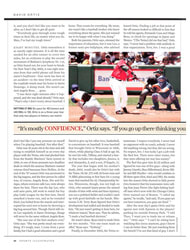
The Ortiz Shift
WITH A seriesagainst the Red Sox looming, Joe Maddon was pedaling away on an exercisebicycle one day in mid-April, pondering how to contain David Ortiz, when theidea came to him. The first-year Devil Rays manager came up with the 3-4shift--a three-infielder, four-outfielder alignment especially designed for themost feared lefthanded hitter in the league.
"I read theEinstein line that the definition of insanity is doing the same thing over andover again and expecting a different result," says Maddon, 52, who poresover spray charts (showing the location of each ball that a batter puts inplay) on his laptop computer. "So I thought it was time to do somethingdifferent. Why not? The guy kills everybody, so let's see if thisworks."
Maddon noticedthat the vast majority of the pull-hitting Ortiz's balls to the right side werefly balls to the outfield. So the manager moved his second baseman andshortstop onto the shallow outfield grass between first and second, shaded hisleftfielder and centerfielder toward right and sent his third baseman toleftfield, leaving the left side of the infield empty and creating a four-manoutfield like that of a slo-pitch softball team. Other clubs, such as theYankees, employ a more traditional shift against Ortiz, with three infielderson the right side (below).
"I try not tothink about it," Ortiz says, "but sometimes it gets to you when you seeall that room out there. I'm seeing [the shift] more and more. If I hit .300this season, I'm a superhero."
It's a sign ofthe times in baseball. "When I played, you never heard of spraycharts--it's something that's come into vogue in the last five to 10years," says Brewers manager Ned Yost, who played in the majors in the1980s and uses shifts on many hitters, from the Cardinals' Albert Pujols, arighty swinger, to the Phillies' Chase Utley, a lefty. Adds Yost, "Theshift can mess with a guy's head. With a guy like Pujols, you know he can drivethe ball the other way for a hit any time he wants. But that takes the home runaway."
Maddon hasn'tused the 3-4 shift against other hitters--yet. "I have to keep looking atthe sheets," he says. "There's so much information, why not useit?"
PLUGGINGHOLES
When most teams face Ortiz, such as the Yankees (below), they position threeinfielders on the right side of second base because the lefthanded-hittingOrtiz pulls the ball most of the time (47.9% this season, through Sunday). Theshifts have been somewhat successful: Ortiz, who hit .300 over the past twoseasons, was batting .265 with 44.3% of his hits still going to rightfield.
[This article contains two complex diagrams. Please see hard copy or pdf.]
LEFTFIELD: PCT.OF ALL BALLS PUT IN PLAY
16.8%
HITS: 13
OUTS: 18
HOME RUNS: 1
PCT. OF ALL HITS: 21.3%
INFIELD LEFT:PCT. OF ALL BALLS PUT IN PLAY
5.4%
HITS: 1
OUTS: 9
PCT. OF ALL HITS: 1.6%
CENTERFIELD: PCT. OF ALL BALLS PUT IN PLAY
29.7%
HITS: 17
OUTS: 31
HOME RUNS: 3
PCT. OF ALL HITS: 27.9%
INFIELD CENTER:PCT. OF ALL BALLS PUT IN PLAY
1.1%
HITS: 0
OUTS: 2
PCT. OF ALL HITS: 0%
RIGHTFIELD: PCT.OF ALL BALLS PUT IN PLAY
27.6%
HITS: 27
OUTS: 24
HOME RUNS: 14
PCT. OF ALL HITS: 44.3%
INFIELD RIGHT:PCT. OF ALL BALLS PUT IN PLAY
19.5%
HITS: 3
OUTS: 34
PCT. OF ALL HITS: 4.9%
Spray Chart
With a wealth ofdata available to detect hitting trends--including spray charts that show thelocation of each ball that a batter puts in play--clubs are deploying uniquedefensive alignments more than ever. Ortiz's 2006 spray chart through Sunday(above) shows that the vast majority of his hits (blue dots) were torightfield, including 14 of his 18 home runs.
•Hit
•Out
*Home run
Source: BaseballInfo Solutions
PHOTO ILLUSTRATION
ILLUSTRATION BY DON FOLEY; PHOTOGRAPH BY CHUCK SOLOMON
ILLUSTRATION
Source: Baseball Info Solutions

